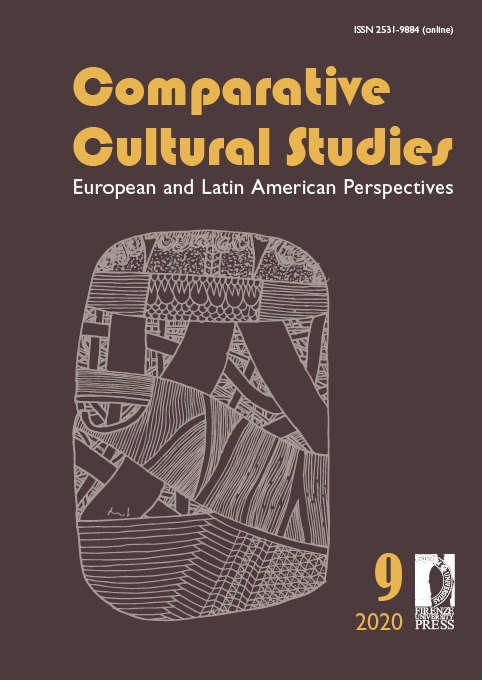La Rumba Ritmo de Resistencia Cultural
DOI:
https://doi.org/10.13128/ccselap-11847Palavras-chave:
Rumba complex, Guaguancó, Yambú and ColumbiaResumo
The following study is aimed at exposing the importance of the Rumba Complex, which emerged in Cuba in the 19th century, not only for Cuban culture but also as a rhythm of resistance of the popular sectors of the country mainly of the descendants of Africans, who through the rumba they assumed positions of defense of their identity, their sense of belonging as popular and more oppressed sectors, their Cuban, the characteristics of this complex of Cuban music formed by several genres, its origin, the way of dancing are treated, the instruments that are used emphasizing the guaguancó as a genre best known throughout the country and more practiced, the most recognized artistic figures that contributed to the promotion of rumba at national and international level and the different spaces such as the Cinema, television, theater. The paper refers to the relationship between the port-city and the migration of Hispanics and Africans brought as slaves to the Island and that in a cultural exchange their descendants created one of the most prominent rhythms in the Cuban musical stave , but that contributed to the identity of the Cuban people and to develop links between the practicing sectors belonging to the dispossessed classes, the profane nature of the rhythm is also related. For the study we used a bibliography of different authors featured in the studies of the Musical Complex of the Rumba different.
Downloads
Referências
https://www.definicionabc.com/social/transculturacion.php.
Alfaro Hoyos Jorge https://wwww.Fiesta del tambor popular.com /música/géneros musica-les/.rumba internacional.
Díaz Ramón. Rumberos de Cuba, Cubacultura, martes 13 de marzo de 2012.
______, Lo mejor de la música, 21 de enero 2016.
Diccionario Enciclopédico de la Música en C, TOMO 3, Instituto cubano del libro, Editorial letras cubanas, La Habana, 2009.
Feliú Virtudes, La rumba patrimonio cultural de la nación, en .
Guía de trabajo para Metodólogos de Cultura popular Tradicional, Dirección de estudios socioculturales, Ministerio de cultura República de Cuba, 2016
Lam Rafael, El imperio de la música, Editorial José Martí, La Habana, 2014.
Orovio Helio, Diccionario de la Música cubana Biográfico y Técnico, Editorial Letras cuba-na, Ciudad de la Habana, 1981.
Xiques Cutiño Delfín, La cubana Rita Montaner, Hoy en la historia, en <http://www.gran-ma.cu/hoy-en-la-historia/2018-04-16/la-cubana-rita-montaner-la-unica>.
Downloads
Publicado
Como Citar
Edição
Secção
Licença
Direitos de Autor (c) 2020 Vicente Robinson Echevarría

Este trabalho encontra-se publicado com a Licença Internacional Creative Commons Atribuição 4.0.
Esta licença permite que terceiros partilhem (copiem e redistribuam o material em qualquer meio ou formato) e adaptem (remisturem, transformem e criem a partir do material para qualquer fim, incluindo comercial), desde que a autoria e a primeira publicação nesta revista (A Revista, DOI do trabalho) sejam reconhecidas, seja fornecida uma hiperligação para a licença e seja indicado se foram feitas alterações ao trabalho.







